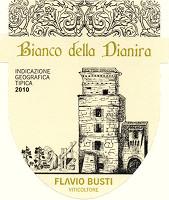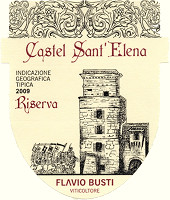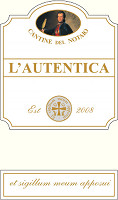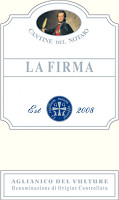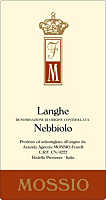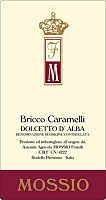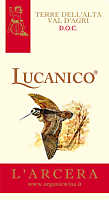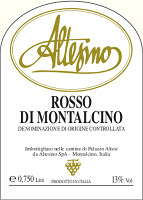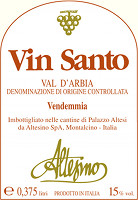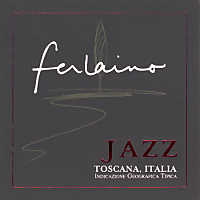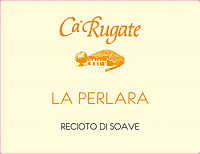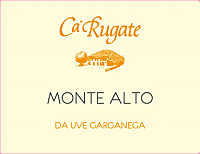|
When human beings have started to understand the fundamental processes of wine
making and to control them, most of wines made at those times were sweet. We are
not talking about modern times, those which allowed the understanding of
fermentation according to a biological and chemical point of view, indeed of
quite remote times. A time in which men realized grape juice, because of a sort
of magic which looked like a boiling (from which comes the term
“fermentation”, from Latin fervere, that is “to boil”) was
transformed into a pleasing beverage, with a corroborating and inebriating
effect, that is wine. It may also be for reasons associated to the taste of
those times, now distant of tens of centuries, that the most celebrated wines of
the history had in common the same characteristic, that is to have a remarkable
sweet taste. This quality could also be a need in order to balance acidity that,
it is very likely, because of a lesser knowledge about keeping, chemical and
biological processes associated to acetic bacteria, at those times this could
have been a quite common and strong quality in wines.
Sweetness in wines of those times could have been the consequence of a
fermentation process not fully completed, maybe caused by the lowering of the
temperature because of the arrival of cold seasons, therefore leaving in the
wine a high quantity of residual sugar. However at those times the practice of
making wines with dried and overripe grapes was very common, something which can
also signal the making of very sweet wines on purpose. It is likely sweetness -
and acidity - reached very high levels as to encourage the consumption of wine,
at least in wealthy and noble social classes, after having diluted it with
water, something happening, for example, during the renowned symposia of ancient
Greeks. It should also be said that in ancient Greece, the consumption of non
diluted wine was considered as vulgar and discreditable, a custom
usually associated to crude and rough people, also for the inevitable
consequence this usually produced, that is drunkenness.
Thanks to the high content of sugar and, last but not the least, the alcohol
content, these wines are well suited for the aging as these two elements, as
well as acidity in white wines or polyphenols in red ones, strongly contribute
to their keeping. Wines produced with dried grapes can age for many years in
bottle, while developing with time very complex qualities, in particular in the
olfactory profile, while keeping the typical strong sweetness and roundness. The
general trend of our times, concerning the taste of wine, prefer dry wines while
leaving to sweet wines a quite restricted market part and destined to few wine
lovers. The scarce availability of products of real quality and value has
probably determined this type of market as - it should be said - most of sweet
wines are produced with quite disputable techniques and giving a wine of
quality, and in particular, with organoleptic characteristics, quite
disappointing and modest.
The production of sweet wines is basically made by using three main methods. The
most frequent and typical one provides for the use of dried grapes, which
therefore lose part of water with a consequent concentration of sugar, then
crushed and fermented. Another method provides for the interruption of the
fermentation process in order to leave in the wine a quantity of residual sugar
and therefore sweetness. The third method, not permitted in many countries of
the world, including Italy, provides for the adding of a sugar syrup or sugar
to a dry wine. On this regard it should be noticed this technique is used for
the production of many classic method sparkling wines, to which, after the end
of the refermentation in bottle, it is added a mixture of the same wine,
sometimes brandy and then sugar in order to adjust the final sweetness. For the
sake of information, these are the only wines for which it is permitted in
Italy, as well as in other countries, the adding of sugar.
|
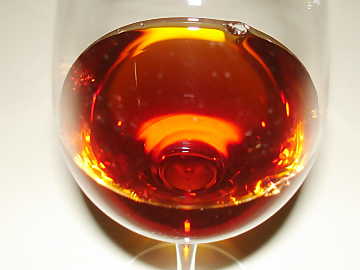 | |
| Sweet wines made from
dried grapes, after a long aging in bottle, get a deep amber color | |
|
The most frequent technique - like already said - consists in the use of dried
grapes, subsequently crushed and vinified. The drying of grapes can be made in
many ways, all however having the same goal, that is diminishing the content of
water in berries in order to concentrate sugar and acid substances. During the
drying, the biological activity of berries is not interrupted, therefore it is
obtained - as a side effect - also a significant ripening process. The drying is
generally made by making use of three different techniques, each of them
offering advantages and disadvantages, therefore their application is chosen
according to the type of wine to be made. Of these techniques, as we will see
later, one is not really “spontaneous” and “natural”, in every case it
produces the result of drying the berries and the concentration by means of a
reduction of water.
The most simple method consists in leaving the bunches on the vine and to wait
for the natural drying of berries, therefore the grapes are being harvested.
This technique is pretty common, however the most frequent one consists in
harvesting ripe grapes - or, in many cases, overripe - and then laying the
grapes over mats inside a room and to wait for their drying. Sometimes the
drying of grapes is done not in mats but hanging them in wires on racks. The
room used for the drying of grapes, when these two methods are being used, must
have specific characteristics. Among the most insidious consequences of the
drying of grapes, as well as being very frequent, is the developing of mold
that, when it develops excessively, causes the damaging of berries and make them
rot. For this reason, the room for the drying of the grapes must be well aerated
in order to avoid dangerous conditions of humidity which could favor the
development of mold.
In order to avoid negative effects of mold which could develop on berries, many
producers prefer to hang the bunches on racks therefore allowing them to freely
hang while avoiding any type of contact, something happening on mats, a
condition forcing a periodical turning over of bunches. The last technique used
for the drying of bunches - and strongly opposed by many wine lovers and many
producers - consists in storing the bunches inside a temperature-controlled
cell. In this way can be controlled every factor determining the drying of
grapes, such as temperature, humidity and even a controlled introduction of mold
spores in order to get particular organoleptic results. Mold is not always
negative in the production of sweet wines. It should be said not all the types
of mold, however controlling the development, cause a worsening of grapes.
Botrytis cinerea - also known as noble rot - can in fact give the
grapes organoleptic qualities of remarkable complexity and agreeability.
Botrytis is however a mold and in order to get positive effects on the wine it
is indispensable to strictly control its development as, when it gets
excessively developed, makes the berries rot. Sweet wines produced with grapes
affected by botrytis cinerea are among the most expensive and looked for
wines in the world - of them can be mentioned Sauternes and Tokaji Aszú - and
the “miracle” is done thanks to the particular environmental condition
limiting the development of mold. The optimal condition is to not allow the
excessive development of this mold, an effect which can be obtained with the
alternation of humid nights and dry, hot and windy days. This condition allows
the development of botrytis during nighttime and its regression in the hours of
the day, therefore ensuring its presence in berries without bringing the effects
which could cause rot.
The interruption of the fermentation is another method used for the production
of sweet wines. This technique does not necessarily provides for the use of
dried grapes; most of the times the wines produced with this technique are
obtained by perfectly ripe grapes and vinified soon after harvesting. The
interruption of fermentation leave to the wine a quantity of sugar which will
give sweetness and a pretty modest alcohol content, according to the moment in
which the process is interrupted. This method is generally used for some sweet
sparkling wines produced with the Charmat method - such as Asti and Brachetto
d'Acqui - and it is also typical for the production of one of the most famous
fortified wines in the world: Port. The famous Portuguese wine is in fact
produced by interrupting the fermentation of the must by adding brandy, an
operation literally “intoxicating” yeast while stopping their activity. The
result is therefore a slightly fermented must with a remarkable quantity of
added alcohol, therefore allowed to age for many years in order to get, after
years of patient wait, a wine of monumental greatness.
Sweetness in wines can also be obtained by adding sugar. It should be noticed
this practice is generally forbidden in most of the wine making countries,
however it is permitted in some specific cases. The practice of adding sugar to
a wine should not be confused with chaptalization, that is the adding of
sugar to the must in order to increase the potential quantity of alcohol
produced at the end of fermentation, a practice that, it should be noticed, is
not permitted in many countries, including Italy. Sugar can be added to some
types of wine and the most frequent use of this technique is for classic method
sparkling wines. At the end of the refermentation in bottle, after disgorging,
in these wines can be added a mixture of wine, sugar and also brandy, in order
to characterize the final product. It is in fact this operation to determine the
final style of the sparkling wine, from pas dosè - that is with no sugar
added - to the sweet style, in which sugar can also be more than 50 grams
per liter.
Sweet wines, in this case those produced with dried grapes, are well suited to
the aging both in wood and in bottle. The aging in wood is not however required
for these wines, as in many cases - and producing wines of remarkable value -
the producer decides to age the wine in inert containers, such as steel or
cement. Thanks to their remarkable complexity, most of the times the aging in
wood, when done for a long time and in barrels having a strong character, tends
to alter the nature of this wine while covering their peculiar qualities. On
this purpose it should be noticed the aging in wood is not only about the
enrichment of the wines with aromas and flavors recalling wood, indeed it is
about the precious and very slow oxidation process which is obtained with time.
This slow oxidation allows in fact sweet wines to develop their organoleptic
qualities, while increasing their complexity and intensity.
Sweet wines made from dried grapes however have a very long potential for aging,
also of tens of years. With time the color of white wines will get deep amber
hues, whereas in the red ones will be noticed an evident garnet red hue with
nuances of brick red. Aromas will however be the ones to get the most from the
benefits of time. If in their youth the aromas in these wines recall dried fruit
and dried flowers, with time they turn into luxurious jams to which are also
added ethereal and tertiary sensation of remarkable complexity. In other words,
a sweet wine aged for a long time, is not a wine to be carelessly appreciated:
it needs the whole attention of the taster. To the taste will be perceived a
remarkable sweetness and the typical roundness is usually increased and
developed while giving, in some cases, a wine having a syrupy consistency,
almost viscous. In case of sweet red wines, the typical astringency of tannins
will be strongly smoothed while producing in the mouth a velvety
sensation to which is added the one of sweetness and roundness.
|


